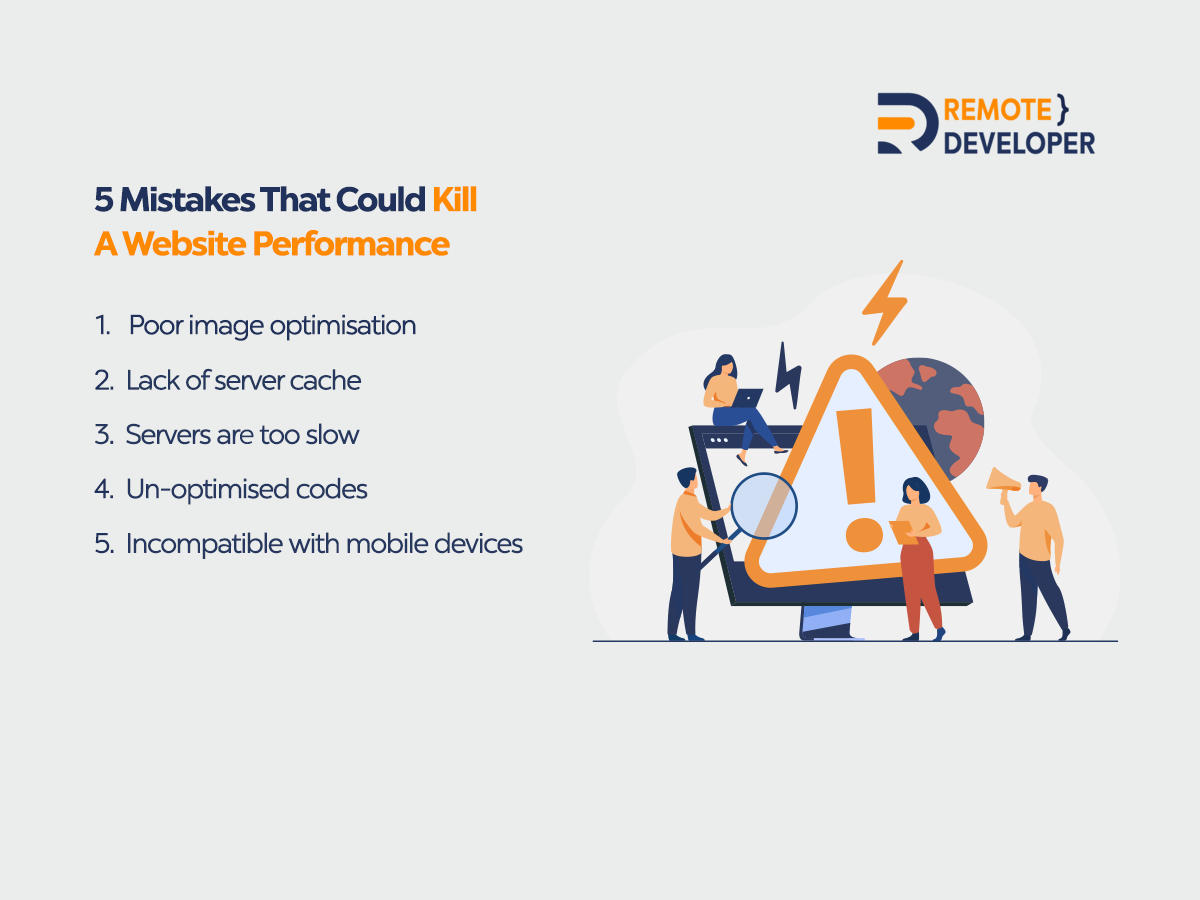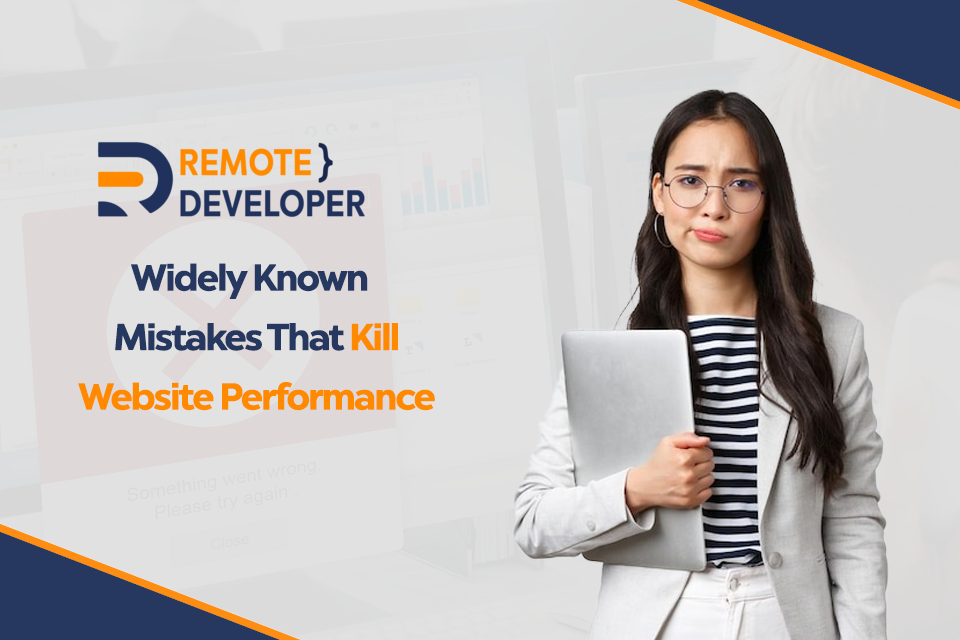Setting up your website and managing its performance can be arduous and repetitive. It needs constant checking, updating, and strategic planning regularly. Otherwise, you might risk losing customers, ruining your branding, and destroying your business.
And while you try your best to manage your website, mistakes can happen. As technology progress and trends evolve, sometimes, practices that are the best are entirely useless and irrelevant. And in this case, you must know that mistakes can kill your website.
To help you with that, we listed in this article 5 mistakes that could kill a website’s performance.
What is a Website Performance Score?
A website performance score measures how well a website performs on the web. Many factors contribute to your website’s performance score, such as page load time, server response time, and the number of requests.
Website performance measures how quickly and smoothly a website responds to commands. The speed and responsiveness of the website are essential for the user experience. A slow or unresponsive website can frustrate users and lead to a high bounce rate.
The perfect website score should be 90 or above. On the other hand, 50 to 90 website score needs improvement, and those 50 and below are considered poor.
Why does website performance matter?
Website performance plays a significant role in your business. We all know that your website is your company’s storefront on the internet. It defines your brand and showcases your products. Like any physical business, it must be well designed and have a clear purpose and function.
In addition, website performance is also crucial for SEO purposes. Google has announced that site speed will be used as an additional ranking factor in search engine results pages (SERPs). If your site performs better than your competitors, you’ll rank higher in SERPs.
5 Mistakes That Could Kill a Website Performance
A website relies on various elements and factors like media assets, servers, and the internet. As such, it’s essential to note and check these elements from time to time. You need to see if it’s affecting the overall performance of your website. Likewise, here are five common mistakes that could negatively affect your website performance.

1. Poor image optimisation
Images are a critical part of web design and development. Businesses can use them to make a website look more attractive and provide additional information to the user. Images are not just decorations for websites. They are essential for two primary purposes:
- Provide visual information about the product or service being sold on the site.
- Make a website more attractive by adding visual elements that websites cannot provide with text alone.
Likewise, businesses or developers must optimise images and make them viewable to website visitors. Poorly optimised image is a term that describes images not adequately optimised for the web. Images that are too large will take up unnecessary bandwidth and slow down the loading time of a website. In contrast, images that are too small will not be able to provide a high enough resolution for the content they’re meant to illustrate.
2. Lack of server cache
A server cache is a temporary storage of data stored on a server. The client can retrieve this data without going through the slow process of retrieving it from the source again. The purpose of server caches is to reduce latency or the delay between when a request for information. Likewise, it is where information requests are stored, so they don’t have to be made each time.
Servers’ cache is vital because it helps speed up web pages and other online content. It also reduces bandwidth usage and makes web pages more responsive, reducing user load. Reducing load times also means increased customer satisfaction, leading to increased revenue potential and higher website conversion rates.
If there is no server cache, then any request for a web page will result in a new proposal to the database, which can be time-consuming and slow down the site.
3. Servers are too slow
The first effect of a slow server is that page loading time increases. It can result in losing potential customers who will not wait for the page to load. The second effect is poor user experience, which can lead to a decrease in conversion rates.
Likewise, there are many reasons why websites might be slow, and website owners must know how to fix these problems. The reasons for a server being slow can be due to the following:
- Overloaded with requests.
- Not configured correctly.
- The client and server network connections are too slow or unreliable.
- Too many applications running on the server at the same time.
- Not enough resources on the server.
4. Un-optimised codes
Coding is the backbone of any website. It makes it imaginable for a web browser to understand and render the content. The HTML and CSS code that makes up a website tells the browser how to display the content on a webpage.
Coding can be optimised for devices like smartphones, tablets, or desktop computers. It ensures that all users have an optimal experience when browsing your website.
Poorly optimised codes can cause a lot of problems with the user experience. For instance, they can slow down the loading time of a website. They can also affect the website’s performance and make it less responsive.
5. Incompatible with mobile devices
Mobile devices are the most popular way to access the internet. In fact, according to Statista, more than 59% of all web traffic is now coming from mobile devices. It means that it’s more important than ever to ensure your website is compatible and optimised with mobile devices.
Several factors can affect a website performance of a website on a mobile device, including the size and speed of the device, its operating system, and connectivity. The most crucial factor is whether or not the site is mobile-friendly. A website not designed for mobile devices will take longer to load on a mobile phone than one designed with mobile users in mind.
Conclusion
Website is an integral part of many businesses. It provides an avenue for traffic, brand promotion, and customer retention. In addition, a good website will help you invite more customers to patronise your products, while a bad one will push them away.
Thus, make sure you avoid these five website performance mistakes that may kill your website. And remember, you can always hire a professional to ensure that your website is well optimised and functioning properly. Remote Developer can help you! Contact us now!

